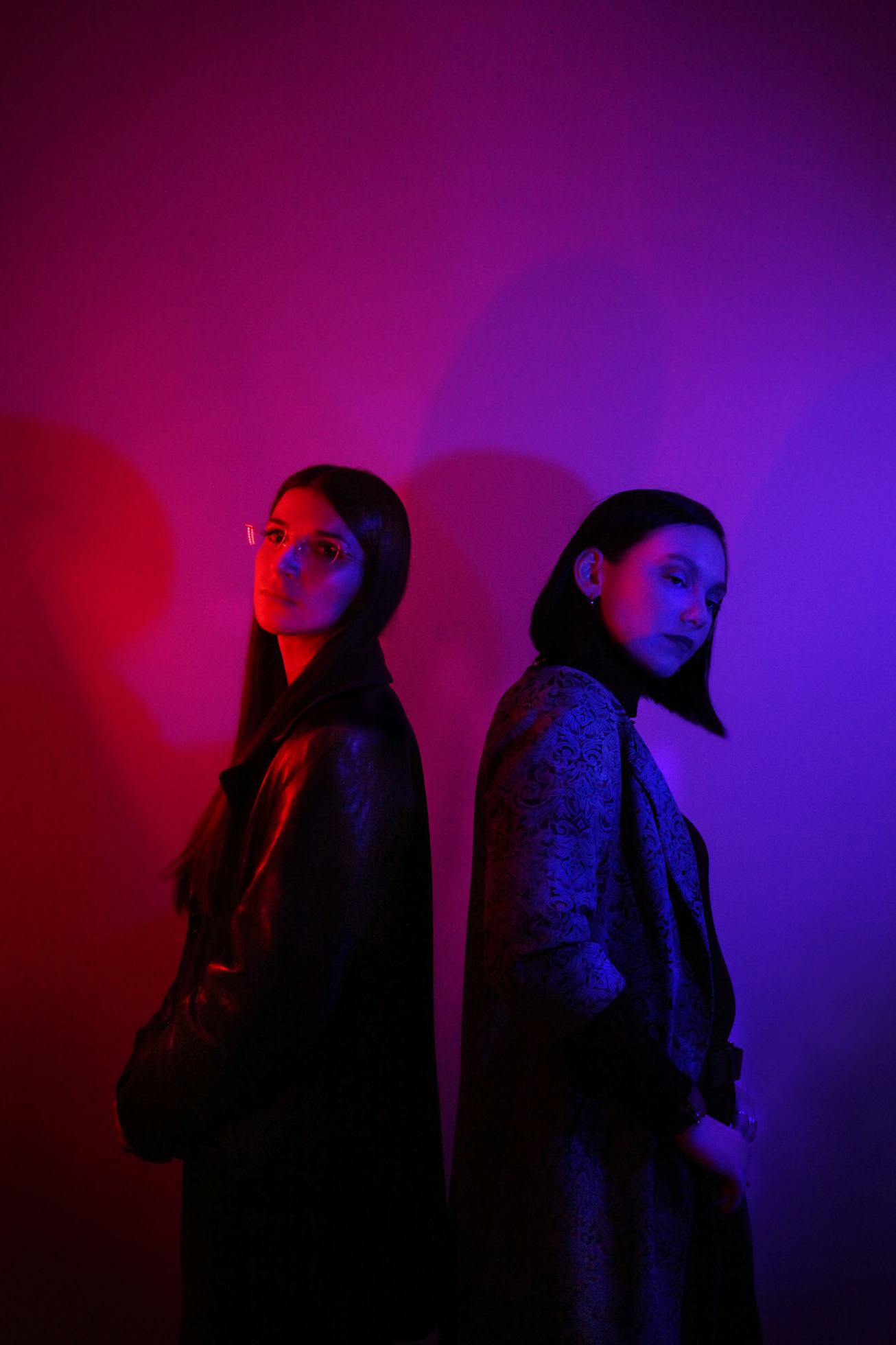
New Pioneers
These Curators Want To Bring The Contemporary Art World Into Your Home
ALT ESC are reimagining what art experiences can feel like in 2021, with a little help from their friends.
Picture yourself climbing the rickety stairs of an unfinished Brooklyn apartment building, brick walls, and a DJ’s beat enveloping you. You enter a fever dream of a room covered in an explosion of rainbow wallpaper and a chair that looks like it’s made of frosting. This is way more fun than looking at art from a foot away in a white-walled gallery.
The scene above is from curatorial platform ALT ESC’s 2017 three-day art and music festival No Vacancy. The parties went from four in the afternoon till four in the morning, and each room held a different exhibition of work like Hein Koh’s plush sculptures or Phaan Howng and Eliott Doughtie’s aforementioned rainbow wallpaper room.
Escaping the white cube is, in essence, what led curators Alison Sirico and Irina V Makarova to found ALT ESC in 2016. The idea was for it to be a curatorial project, a digital platform, and print publication — three mediums that supported each other in synthesizing and documenting communities of rising artists.
Sirico and Makarova met at NYU and continued to be “occasional get-together friends,” Sirico says, who happened to quit their jobs around the same time. Both have backgrounds that intersect curation with event production, with Sirico having cofounded Silent Barn and Makarova producing events for companies like GIF search engine Giphy and YouTube. At the time, they noticed a lack of symbiosis in art and nightlife, two worlds with a lot of overlap in people and culture but that often remained disconnected.
“We weren’t looking towards the art world, we were looking more towards what was going on in nightlife,” Sirico tells NYLON. “Nightlife, as a space, it’s more open to experimentation and open to people of all backgrounds. The art world is this more esoteric, risk-averse, exclusive space. That’s really what drove us to start the project back then.”
The idea of thinking outside the white-cube gallery is more necessary than ever. ALT ESC went on hiatus in 2018 for the reasons a lot of creative endeavors do; their founders, who gave “blood, sweat and tears” as Makarova describes, burnt out of resources and more demanding jobs came calling. Both curators pursued other opportunities, but of course, this year changed a lot.
“I lost my job,” Makarova says. “I got stuck in this empty space, and I was just like my god, not only do we not have whatever corporate events, we don’t have events in general. I miss art, I miss curating, I just miss talking to artists. So Alison and I started talking again.”
Last month, they announced that ALT ESC would be coming back and that they were kicking around some project ideas. The new challenge is how to keep the virtual art-viewing experience fresh amid video chat fatigue. ALT ESC might be built perfectly for this new era of figuring out how to highlight artists and communities in a fragmented, heavily saturated social media landscape.
Before their hiatus, Sirico and Makarova were already experimenting with connecting online curation and the documentation of a community’s narrative using print and in-person art experiences. Obviously, it will be a while before people can crowd into a gallery space, but until then, ALT ESC will likely look a lot like the platform’s beginning: two self-described fan girls of artists who want to see how the work they love is made.
“I feel like everybody’s been cooped up, and there have been a bunch of really cool projects that have come out,” Sirico says. “I feel like the project now is going to be different, not just because it’s going to all be conducted virtually, but it’s a different time period. We’re going to go on all these studio visits, and through those visits, collect and understand the needs of the community and what people are excited about.”
The curators mention a few projects that have excited them recently, from art collective Material Girls’ “Hello Girls!” interview series to Club Antibody, an online club space hosted by Rinsed where the experience of bumping into people at parties was recreated in a futuristic Times Square environment. Makarova craves the feeling of standing next to a speaker or a happenstance encounter with a friend, but she points to one positive aspect of this otherwise heavy time.
“For me, you really see the message and the content of the work, and the person and their story behind it,” she says. “Rather than ‘what spaces are they showing at?’ it’s really, this is a great piece of work, it exists in this space for everyone, what messages does this have?”
They plan to start with studio visits as a sort of a check-in with artists, old collaborators and friends. They’re wanting to make a “really nice catalog” of chats they’ve had with creatives, and from there, will strategize on how to plan a release party “virtually in a way that’s exciting,” Sirico says.
The rebirth of ALT ESC will also reflect an evolving world where conversations about social justice and change are at the forefront of our minds. Sirico emphasizes that it feels important to go on virtual studio visits and see how artists are talking about these issues through their work.
“There are so many conversations about how we want the world to change,” Sirico says. “Everyone has a different take on how we should solve these problems right now, and a lot of people are trying to think about and resolve these issues through the work that they make.”
Just as they were two years ago, the curatorial duo will be there documenting those conversations until, one day, we can be looking at art with our friends in a Brooklyn apartment at 3am.
This article was originally published on